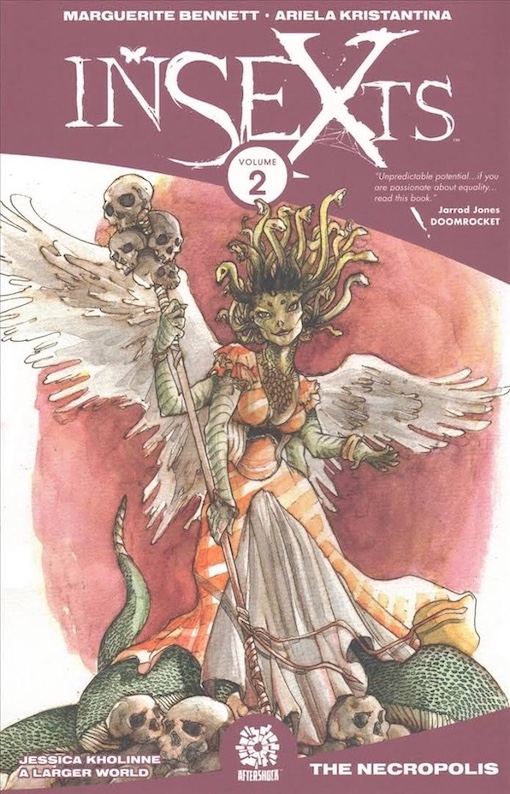Classics and Comics Intertwined
Thu. Oct. 20, 2022
Natalie Swain has just published an article in the prestigious Classical Receptions Journal (Oxford University Press) that examines the contemporary comicInSEXTS in light of its many allusions to Classical literature and culture. Swain’s expert analysis demonstrates that comics such as INSEXTS, which combine art and text in creative and narratively interesting ways, are integral to contemporary reception and adaptation of the myths and legends of the ancient Greeks and Romans.
Abstract: Set in nineteenth century Europe, InSEXts tells the story of Lady Bertram and Mariah, two women in a romantic relationship who can transform into insects in order to defend their nascent family. In the second arc of the series, The Necropolis, Lady Bertram, and Mariah are joined by Phoebe (a Black, transgender artist) whose friends are being transformed into art by members of the patriarchal art community, who value women only as silent and beautiful Muses. Allying with ‘Medusa’, a misidentified Javanese goddess who has been forcibly brought to Europe, Lady Bertram and Mariah thus enter a narrative replete with Greek and Roman mythology. In this paper, the author sets out to demonstrate that, through the receptions of Pygmalion and Medusa, InSEXts: The Necropolis effectively reflects Cixous’ ‘Laugh of the Medusa’, replicating the empowerment of female creativity which Cixous suggests. By mirroring these Ovidian intertexts and becoming ‘writing women’ themselves, comics creators Bennett and Kristantina allow their own characters to re-write and subvert traditional narratives, to tell their own stories that represent elements of Ovidian narrative to respond to and embody the kind of female creativity advocated by Cixous.
Read the article here (be sure to log into your UWinnipeg library account)

